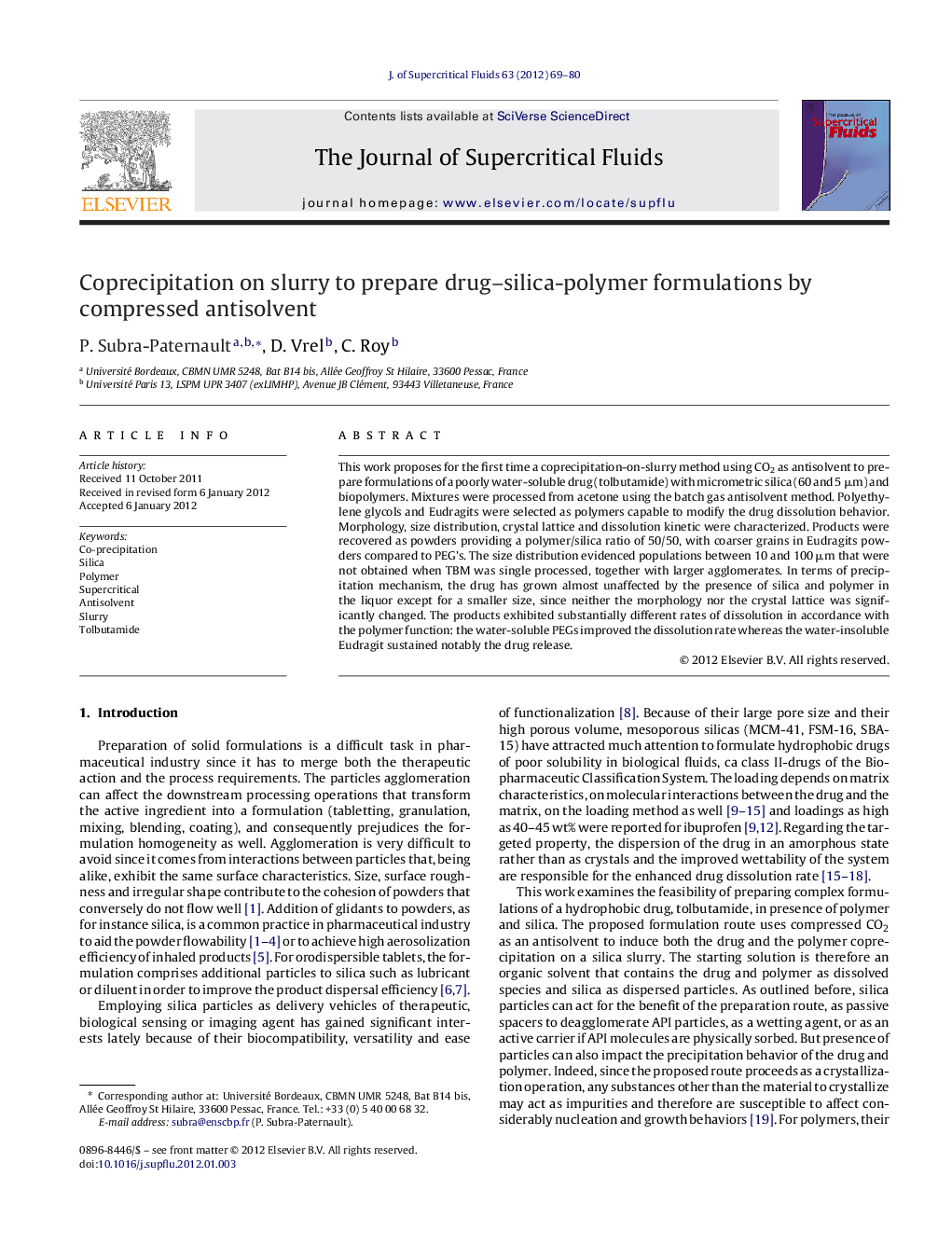| Article ID | Journal | Published Year | Pages | File Type |
|---|---|---|---|---|
| 231158 | The Journal of Supercritical Fluids | 2012 | 12 Pages |
This work proposes for the first time a coprecipitation-on-slurry method using CO2 as antisolvent to prepare formulations of a poorly water-soluble drug (tolbutamide) with micrometric silica (60 and 5 μm) and biopolymers. Mixtures were processed from acetone using the batch gas antisolvent method. Polyethylene glycols and Eudragits were selected as polymers capable to modify the drug dissolution behavior. Morphology, size distribution, crystal lattice and dissolution kinetic were characterized. Products were recovered as powders providing a polymer/silica ratio of 50/50, with coarser grains in Eudragits powders compared to PEG's. The size distribution evidenced populations between 10 and 100 μm that were not obtained when TBM was single processed, together with larger agglomerates. In terms of precipitation mechanism, the drug has grown almost unaffected by the presence of silica and polymer in the liquor except for a smaller size, since neither the morphology nor the crystal lattice was significantly changed. The products exhibited substantially different rates of dissolution in accordance with the polymer function: the water-soluble PEGs improved the dissolution rate whereas the water-insoluble Eudragit sustained notably the drug release.
Graphical abstractFigure optionsDownload full-size imageDownload as PowerPoint slideHighlights► Preparation of drug–silica-biopolymer formulations. ► By CO2 induced coprecipitation on silica slurry in the batch antisolvent version (GAS). ► De-agglomerating effect of silica but no impact on crystallization except on size. ► Polymer coating of drug + silica agglomerates. ► Sustained release or improved dissolution according to polymer type.
